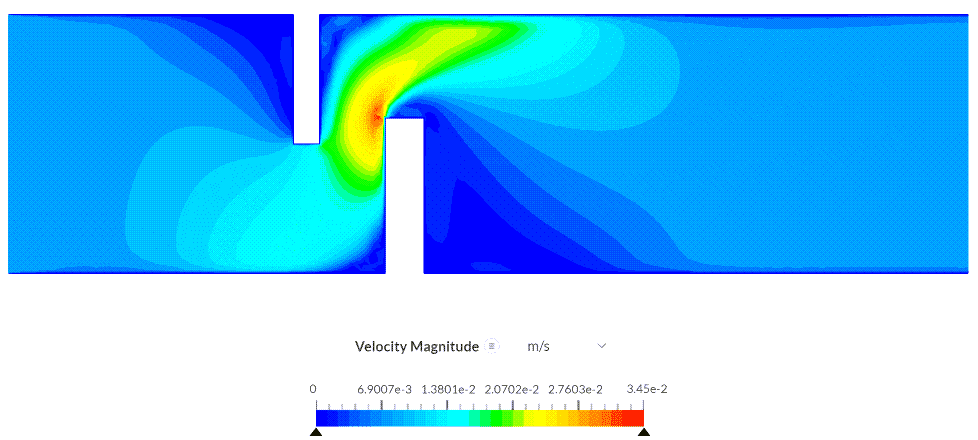When performing computational fluid dynamics (CFD) simulations, properly defining the inlet and outlet boundary conditions is crucial to the success of the simulation. Why is extending the inlets and outlets so important?
Solution
There are a few main benefits of extending the inlets and outlets of a geometry before running a simulation. Extensions help ensure that the flow is fully developed as it is entering and exiting the simulation domain. Getting a uniform velocity profile along the inlet and outlet area helps with numerical convergence and more accurate results.
Around sharp turns, it is crucial to make sure the outlet boundary condition is placed far enough downstream. If not, the simulation can diverge or provide incorrect results. If the outlet is placed too close to an obstacle, such as geometrical features causing flow expansion or contraction, the flow might undergo recirculation downstream from it and, by having an outlet section that is too short, this recirculation behavior will not be captured accurately in the results.
In the following example, we can see the benefits of extending the inlets and outlets. The velocity profile is drastically different in the first geometry but stays nearly the same as we continue to extend the faces.
When comparing the images above, the results from figures 2 and 3 are very close to each other, indicating that the solution is not dependent on the inlet and outlet extensions anymore. On the other hand, the results on figure 1 are much different when compared to the other cases, indicating that the inlet and outlet sections are too short.
Generally, ensuring an inlet length of 5 times the inlet width and an outlet length of 10 times should be sufficient. If there are still unnatural results or convergence issues, extending these faces further won’t negatively affect the final result of the simulation.
For more information about CFD simulations, be sure to check out the following pages:


